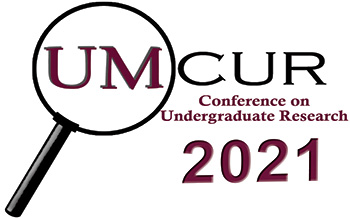Project Type
Poster
Faculty Mentor’s Full Name
Kelly J Dixon
Faculty Mentor’s Department
Anthropology
Abstract / Artist's Statement
Missoula grew rapidly over the past century and a half, with urban expansion quickly infringing on past “edges” of the city where burial grounds were rapidly replaced by residential development. The Cherry Street Cemetery in the Lower Rattlesnake neighborhood is one such place. While some of the graves at the Cherry Street Cemetery were reinterred to another cemetery in Missoula in advance of 20th-century urban growth, my research draws attention to the fact that not everyone was reinterred. As a result, burials left behind have been built over for over 100 years. As an Anthropology student focusing on archaeology and bioarchaeology, the Cherry Street Cemetery immediately caught my attention when mentioned in one of my classes. Since learning about this site, I have embarked upon a multi-semester research project with the help of Archaeology Professor Kelly Dixon and PhD Candidate Nikki Manning. Here I present an overview of my research to date, drawing from at least one bioarchaeological case of a Chinese child, as well as archival and oral evidence. While there is another community of UM historical archaeology students exploring artifacts from the late 19 and early 20th-century Chinese community/-ies downtown Missoula, I am building on and expanding the context of this research to the Cherry Street Cemetery. It is likely that funeral ceremonies for this child started downtown at the Chinese temple ended up at Cherry Street. By studying the Cemetery, I will try to determine whether and how this Cemetery was associated with Missoula’s historic Chinese community. In turn, I will also explore how the subsequent treatment of the people left behind is a microcosm of the social injustices that the Chinese—and other non-White people—faced while residing in Missoula. Indeed, the Cherry Street Cemetery seems to have been “swept under the rug” due to city expansion and/or historical amnesia. I believe that people still buried there require recognition since they were so easily forgotten and their resting place disturbed. I see this as a start to an even larger problem that is being faced in today’s society, as a result of minority burial sites being desecrated and disturbed due to city expansion. Bearing this in mind, there is a dire need for a non-invasive survey and commemorative interpretive signage at places like this to protect souls in the future.
Category
Social Sciences
Owens Oral Presentation for UMCUR
Inequality and the Dead: Historic Cemetery in Missoula and the Chinese People Left Behind
Missoula grew rapidly over the past century and a half, with urban expansion quickly infringing on past “edges” of the city where burial grounds were rapidly replaced by residential development. The Cherry Street Cemetery in the Lower Rattlesnake neighborhood is one such place. While some of the graves at the Cherry Street Cemetery were reinterred to another cemetery in Missoula in advance of 20th-century urban growth, my research draws attention to the fact that not everyone was reinterred. As a result, burials left behind have been built over for over 100 years. As an Anthropology student focusing on archaeology and bioarchaeology, the Cherry Street Cemetery immediately caught my attention when mentioned in one of my classes. Since learning about this site, I have embarked upon a multi-semester research project with the help of Archaeology Professor Kelly Dixon and PhD Candidate Nikki Manning. Here I present an overview of my research to date, drawing from at least one bioarchaeological case of a Chinese child, as well as archival and oral evidence. While there is another community of UM historical archaeology students exploring artifacts from the late 19 and early 20th-century Chinese community/-ies downtown Missoula, I am building on and expanding the context of this research to the Cherry Street Cemetery. It is likely that funeral ceremonies for this child started downtown at the Chinese temple ended up at Cherry Street. By studying the Cemetery, I will try to determine whether and how this Cemetery was associated with Missoula’s historic Chinese community. In turn, I will also explore how the subsequent treatment of the people left behind is a microcosm of the social injustices that the Chinese—and other non-White people—faced while residing in Missoula. Indeed, the Cherry Street Cemetery seems to have been “swept under the rug” due to city expansion and/or historical amnesia. I believe that people still buried there require recognition since they were so easily forgotten and their resting place disturbed. I see this as a start to an even larger problem that is being faced in today’s society, as a result of minority burial sites being desecrated and disturbed due to city expansion. Bearing this in mind, there is a dire need for a non-invasive survey and commemorative interpretive signage at places like this to protect souls in the future.
